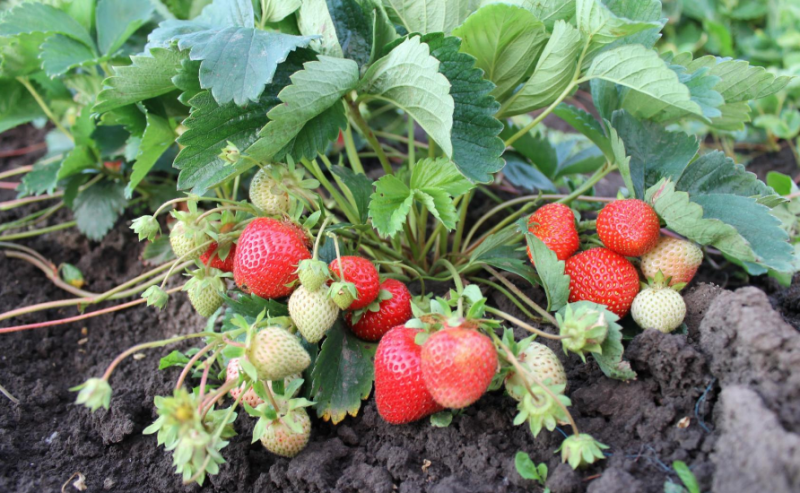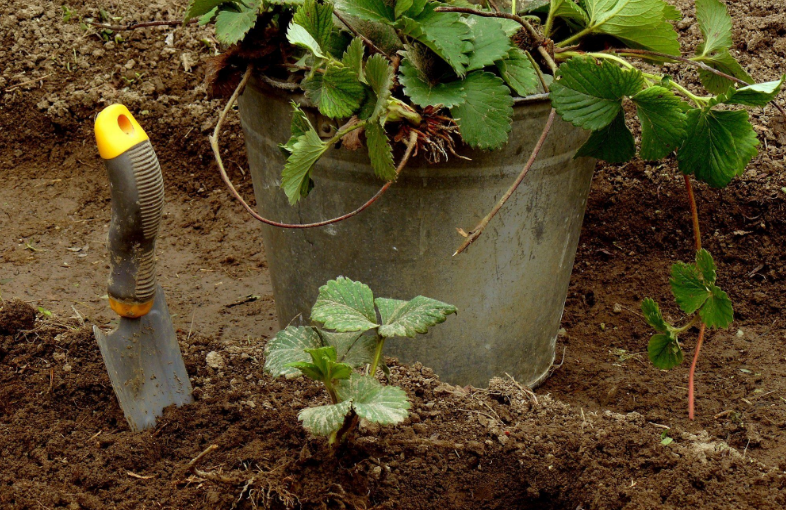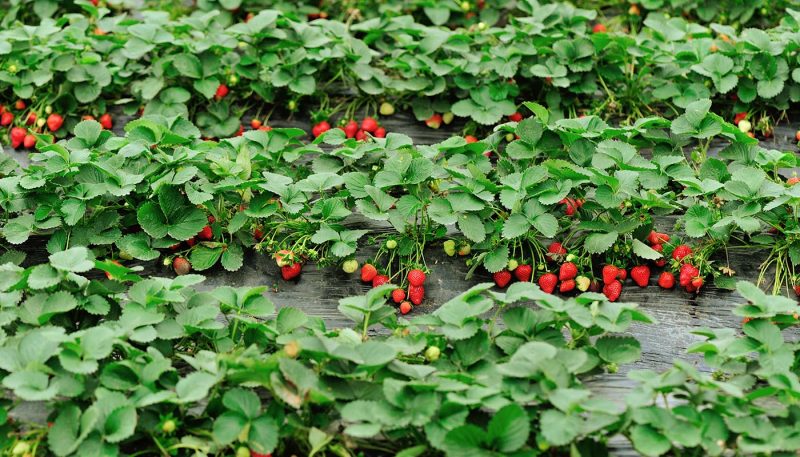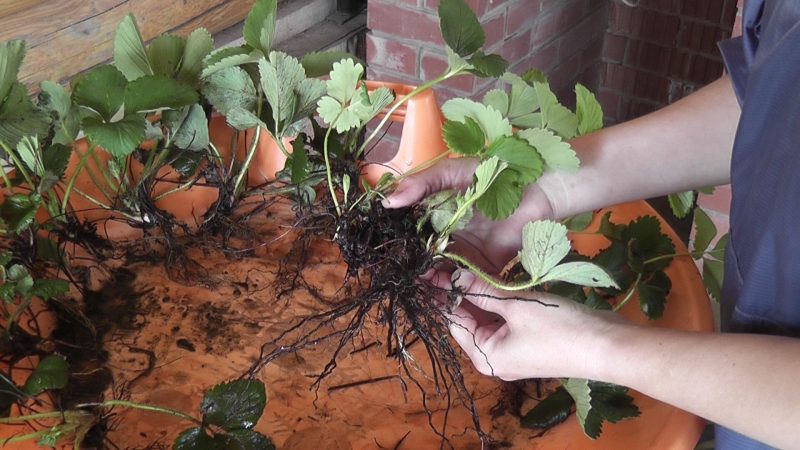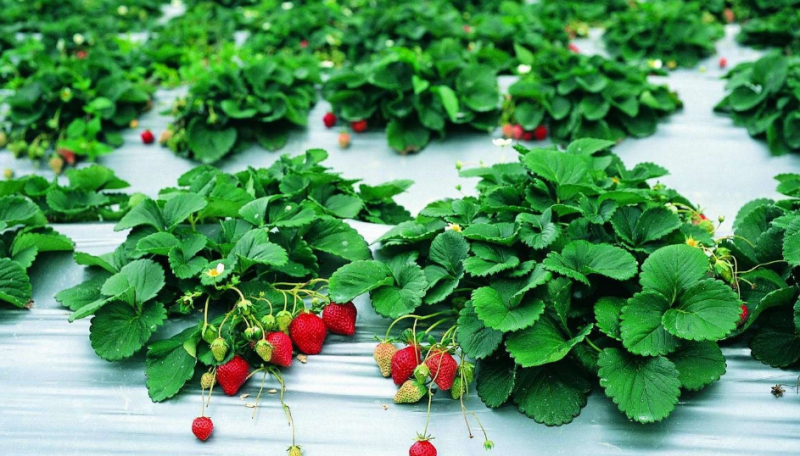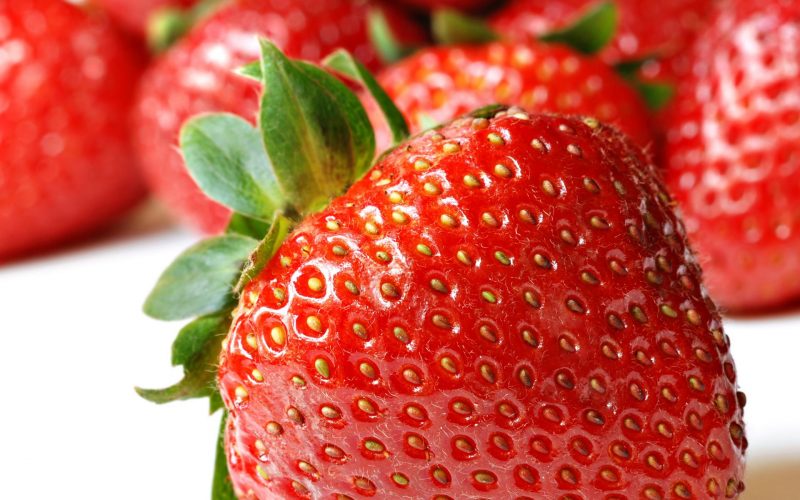Growing strawberries in open ground requires the implementation of certain agricultural practices. Only surrounding the berry with care and attention can you get a rich harvest.
Material Content:
The most productive strawberry varieties
Varieties of garden strawberries are divided by signs of precocity.
- From the early species, one can distinguish the “Marushka” and “Cleary”. These varieties produce many large berries with excellent taste.
- To mid-season, the most productive varieties include "Forget-me-not" and "Carmen". The berries of this strawberry are very large.
- Of the late varieties, Chamoru Turusi can be distinguished, which is distinguished by high productivity and large fruits.
Every year there are more and more varieties of garden strawberries. It is very important to choose the type of wild strawberry that will grow well in your climate.
Features of outdoor cultivation
Most often, in the open ground, the classical method of cultivation is used. But you can arrange vertical beds, if the site is sorely lacking space.
Culture loves the sun, and only a few varieties can accept even light penumbra. You can not plant strawberries in the lowlands and in wetlands with stagnation of melt water.
It is advisable to choose a landing site on the south side of the site, reliably protected from the north wind and drafts.
Planting berries on the site
Planting strawberries in open ground begins with the preparation of the selected site. In the middle lane, strawberries are best planted in mid to late summer. It is advisable to choose a site on the south side of the site, well lit by the sun all day.The soil begins to be prepared 2 months before planting.
Strawberries do not like clay soil. Therefore, if the soil contains a lot of clay, when digging the site, humus should be added. Digging the ground, manually select the weed grass and roots. The culture prefers medium acid soil, and if the reaction is acidic, organic matter should be added. If the soil is alkaline - mineral fertilizers are applied. It is advisable to dig the selected area several times.
Before planting, the seedlings are soaked in roots in a weak iodine solution for 3 days. Then, in the evening, they begin to plant outlets. It is important to ensure that the root system of the bushes is not wrinkled in the hole.
Landing technology:
- Mark the holes at a distance of about 40 cm from each other.
- Seedlings are lowered into the holes and sprinkled with earth. It is necessary to ensure that the heart is when planting just above the soil level.
- Sockets shed and necessarily mulched.
The next day, strawberry beds should be inspected. If individual bushes are too deeply planted, they must be carefully lifted. Too high planted seedlings sprinkled with earth.
Many gardeners use tall beds for strawberries. This method of planting is justified in case of wetland plot.
All the subtleties of strawberry care
The technology for growing strawberries is not so complicated. The main thing in leaving is timely watering, loosening the soil and applying fertilizers.
If strawberries can be reconciled with a shortage of moisture for a short time, then it is impossible to get a good crop without properly applied top dressings.
- At the very beginning of flowering, in spring, the berry should be fertilized with potash compounds. You can use kalimagnesia, potassium chloride or potassium sulfate.
- To increase the yield of a plant, in the spring it is sprayed with boric acid, breeding 1 tsp. substances in 10 liters of water.
- Adult bushes at the beginning of the growing season are fed with nitroammophos in spring, breeding 1 tbsp. l drug in a bucket of water.
- During flowering, saltpeter is introduced under the berry, and after harvesting the beds are fertilized repeatedly with nitroammophos.
- In order for the strawberry plantation to yield a good crop of large berries for the next year, already in the fall the plants are fertilized with urea, diluting 30 g of the substance in a bucket of water.
For the whole season it is enough to water the berry about 10 times. For the first time, planting is plentifully shed in the spring before flowering so that the ovaries do not crumble. Subsequent watering is already carried out between the harvests of berries. Necessarily needed and winter pre-winter watering, which is carried out in the fall.
It helps to retain moisture in the soil layer of mulch. Do not ignore the mulching, as this simple way of care greatly facilitates the work of the gardener. As mulch, you can use straw, mowed grass, sawdust. It is advisable to lay a layer of material approximately 10 cm thick.
As a rule, in European countries straw is used for mulching. Therefore, sometimes strawberries are called "strawberries."
Timely pruning is very important in berry care. The first pruning is carried out after the snow melts. Its purpose is the removal of all old, dried leaves and shoots. All damaged parts of the bushes should be trimmed.
After removing the berries, one third of the foliage is removed from the bushes. Before the cold weather, the sockets still have time to build up green mass and lay the buds of next year. It is necessary to examine each bush and cut off all diseased leaves, mustaches, peduncles.
You can not cut off all the leaves before wintering, although many gardeners practice this. Radical pruning can harm outlets, as strawberries can even die during frost.
Growing remontant strawberries in their care is not much different from ordinary varieties. The only difference is that you can’t remove leaves from strawberries that bear fruit several times, as this reduces yield. In autumn, only flower stalks are cut in such varieties.
After fruiting, garden strawberries also require careful care.
It is necessary:
- remove old mulch in the fall, as pests can winter there;
- weed beds;
- loosen the soil around outlets;
- to trim;
- continue watering until the cold weather.
Breeding methods
The easiest way to propagate strawberries in your area with a mustache, although you can do this by seed method or by dividing the bush.
It is advisable to choose July shoots for propagation by a mustache. Planting material from them will be the strongest, and young outlets will have time to take root well before frost. From one plant, you can get about 10 young bushes. The largest sockets on the mustache of the first and second order. The remaining plants are inappropriate to leave.
To get a large number of mustaches, it is necessary to remove all peduncles in the selected bushes in the spring. When the first roots appear on the mustache, they are sprinkled with moist soil and begin to be regularly watered. Many gardeners root their mustache in the wet sand. When the leaves grow stronger on young outlets, around mid-August, they can be separated from the mother and transplanted to a new place.
Pest and Disease Control
It is easier to prevent the occurrence of diseases and pest attacks than to fight them. Therefore, it is so important to carry out prevention.
The first thing to do when deciding to grow strawberries is to choose the right variety that suits the climatic conditions of the region.
The strongest outlet is unpretentious, winter-hardy varieties. Although many modern types of garden strawberries are highly resistant to many diseases.
- Seedlings before planting, especially if purchased on the market, should be decontaminated. To do this, first the bushes are immersed in hot water, and then immediately into the cold.
- Optimally, if the strawberry plantation will be operated for three years. After this period, it is better to transplant strawberries to a new site, using healthy seedlings.
- Of great importance are the predecessors of strawberries in the garden. As a result of the cultivation of certain crops, pathogenic bacteria and pests accumulate in the earth. It is undesirable to plant seedlings after raspberries, onions, cabbage and peas. Strawberry will grow best after root crops.
- In order to avoid many problems, beds should be mulched, as well as sprayed outlets with growth stimulants such as Zircon and Gumi, which strengthen the immunity of plants.
- Immediately after the snow melts, so that the plantation does not get sick, the bushes are shed with hot water with the addition of potassium permanganate. You can use copper sulfate. Urea fertilizer also helps save strawberries from many misfortunes. To prepare a solution, 600 g of the drug is diluted in a bucket of water, 50 g of copper sulfate is added. Sometimes strawberries are sprayed with Bordeaux liquid, if there are already signs of illness.
- An excellent prevention of the appearance of diseases is the sowing between rows of rosettes of useful plants, for example, marigolds.
- Many gardeners use folk remedies in the fight against diseases and pests. Such home-made compositions, for example, from onion peels, can be used up to 6 times per season.
Common mistakes when growing
The main mistake when growing strawberries is a violation of watering regimes. Due to stagnation of water, sockets can rot and die.
Due to lack of moisture, the berries do not ripen. Therefore, it is so important to learn how to properly water a plantation. It is best to install drip irrigation. This method avoids the swampiness of the beds, and at the same time, the earth is always in a wet state.
Secrets of experienced gardeners
The right seedling for planting is the key to a large crop. When purchasing sockets, you must ensure that each has at least 4 well-developed, healthy leaves. The root system of the seedling must be powerful, strong.
On those bushes that are designed for fruiting all the time you need to trim the mustache and excess leaves. You can safely remove a third of the foliage. Especially the extra leaves that cover the berries from sunlight.Whiskers take a lot of power from the bushes.
Be sure to feed strawberries in spring and autumn.
Growing strawberries is a grateful occupation, because the berry will thank for the care and attention with a generous harvest.



